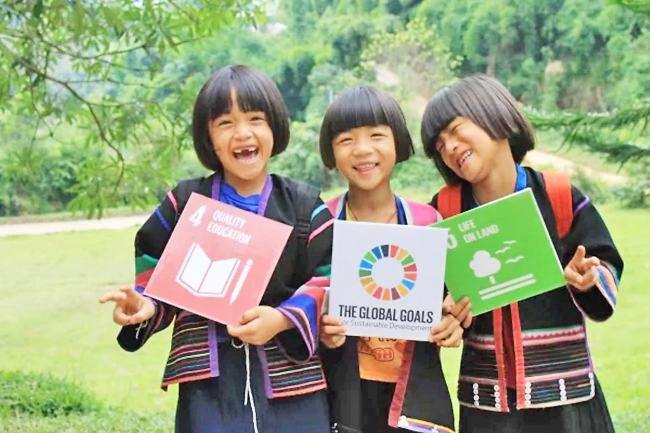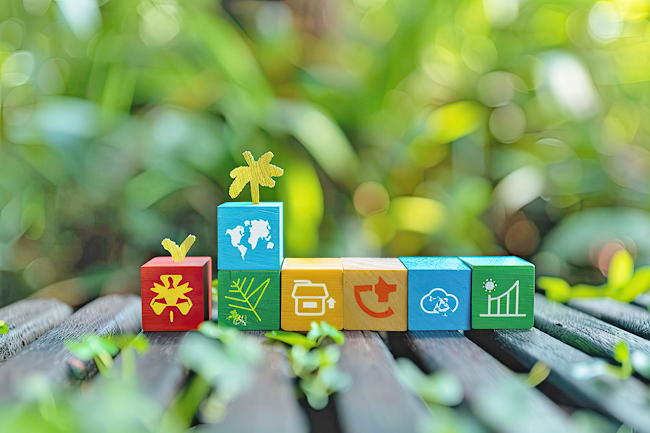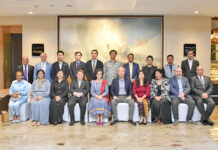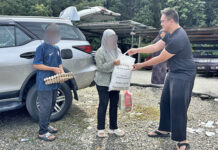As we reach the halfway point to 2030, the latest SDG Progress Report (2024) paints a stark picture: momentum towards the United Nations Sustainable Development Goals (UNSDGs) is stalling.
Just 17 per cent of targets are on track, with nearly half showing only modest progress, while over a third have stagnated or deteriorated.
Although the early years of implementation brought some optimism, since 2019, a cascade of global challenges – ranging from the COVID-19 pandemic to rising conflicts and the intensifying climate crisis – has undermined our efforts. These setbacks have deepened existing inequalities, hitting developing countries and vulnerable communities hardest, with an additional 23 million people thrust into extreme poverty and 123 million more facing hunger. We stand at a pivotal moment in our quest for sustainable development.
17 GOALS, ONE MISSION
Launched by the UN in 2015, the 2030 Agenda for Sustainable Development represents a bold initiative to create a fairer, more equitable world for all – both now and in the future.
While the term “Sustainable Development Goals” has become increasingly familiar, the depth of this ambitious plan often goes unexplained.
The agenda encompasses 17 key objectives aimed at addressing some of the planet’s most pressing challenges.
The journey to the 2030 Agenda has been decades in the making, akin to the gradual build of a symphonic crescendo.
It traces back to 1992 with Agenda 21, a global action plan from the Earth Summit that championed sustainable development. This momentum continued in 2000 with the introduction of the Millennium Development Goals (MDGs), focused on reducing extreme poverty.
Significant milestones further solidified this commitment. The Johannesburg Declaration of 2002 reaffirmed the global dedication to sustainable practices, while the Rio+20 Conference in 2012 amplified this resolve.
Together, these pivotal moments set the stage for the SDGs we recognise today.
By 2015, a series of crucial agreements paved the way for the SDGs.
The Sendai Framework aimed to mitigate the impacts of natural disasters, the Addis Ababa Action Agenda provided financing strategies for sustainable development, and the Paris Agreement marked a critical shift in the fight against climate change.
Collectively, these frameworks offer a comprehensive strategy for a sustainable future.
Today, the High-level Political Forum on Sustainable Development serves as the UN’s primary platform for tracking progress on these goals, while the Division for SDGs (DSDGs) plays an active role in ensuring that this global commitment translates into tangible, positive change.


BLUEPRINT FOR CHANGE
The 17 SDGs represent a blueprint for addressing the most pressing challenges faced by the world today that are intended to transform the global community by creating a more equitable, sustainable and prosperous future.
At the heart of the SDGs is the mission to end poverty in all its forms everywhere. This ambitious goal aims to lift millions out of extreme poverty, providing people with better opportunities and livelihoods. Closely linked is the objective of achieving zero hunger, by securing food for all, improving nutrition, and promoting sustainable farming practices that protect the environment.
Good health is another cornerstone of the SDGs, with the aim to ensure healthy lives and well-being for all, regardless of age. Quality healthcare and access to medical services are critical to this goal. Quality education is equally vital, focusing on providing everyone with the opportunity to learn and grow, promoting inclusive and equitable education systems that encourage lifelong learning.
Gender equality is a major focus, aiming to empower all women and girls, ensuring they have equal opportunities and rights in society. Equally important is clean water and sanitation, ensuring that everyone has access to safe and reliable water sources, crucial for healthy living.
Access to affordable and clean energy is also key to sustainable development, with a focus on making energy sources reliable, sustainable, and modern for all.
The SDGs also emphasise decent work and economic growth, promoting inclusive and sustainable economic progress that benefits everyone, while fostering innovation and entrepreneurship.
The goal of industry, innovation, and infrastructure seeks to build resilient infrastructures, support sustainable industrialisation, and encourage innovation to propel the global economy forward.
Reducing inequality within and among countries is another critical objective, ensuring fair treatment and opportunities regardless of where people are born.
Sustainability is a strong theme throughout the SDGs, with goals to create sustainable cities and communities, making urban environments inclusive, safe, and resilient.
Responsible consumption and production is encouraged to protect the planet’s resources for future generations. Climate action is urgently needed to combat the escalating impacts of climate change, while the preservation of life below water and life on land focuses on protecting marine ecosystems, forests, and biodiversity, all of which are essential to the health of the planet.
The SDGs also emphasise the importance of peace, justice, and strong institutions, promoting inclusive societies where justice is accessible to all and institutions are effective and accountable.
Finally, partnerships for the goals underline the need for global cooperation, with countries working together to achieve these ambitious targets.
A CALL FOR ACTION
Together, these 17 goals form a comprehensive plan to create a fairer, safer and more sustainable world by 2030. By focusing on these key areas, we can work towards a future that benefits everyone, ensuring a better life for people across the globe. Despite some health improvements, global progress has hit a plateau. Education remains a pressing concern, with only 58 per cent of students mastering basic reading skills and one in five young people out of school or work. Gender equality struggles persist, marked by ongoing violence against women.
Environmental issues are urgent, as carbon dioxide levels have surged 150 per cent above pre-industrial levels, and fossil fuel investments continue to rise, jeopardising net-zero targets.
Furthermore, conflict has displaced 110 million people worldwide. While financial aid has increased, developing countries still face a staggering USD4 trillion funding gap annually. Recognising these challenges is crucial for forging a better future.
PROGRESS AMIDST CHALLENGES
Despite setbacks, there’s hope. Progress has been made in reducing infant mortality, improving access to clean water, and supporting families through cheaper remittances.
To achieve the SDGs by 2030, we must end conflicts, boost financial aid and transform energy, food, and digital access. Global cooperation and commitment from all nations are vital. By facing these challenges together, a fairer and brighter future is still within reach. – Izah Azahari



















































